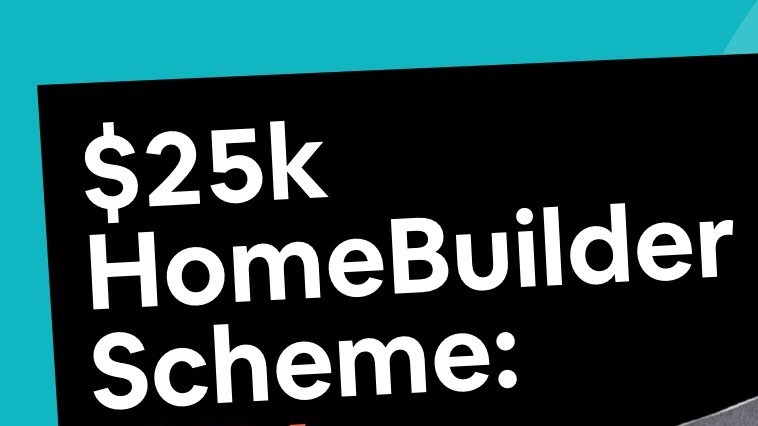Blog
Homebuyers grant: Full details of $25k HomeBuilder scheme announced
June 4, 2020

On Thursday 4th June 2020 the Australian government announced the homebuilder stimulus scheme, offering $25,000 grants for new homes or substantial renovations.
But just who is eligible for the cash and what are the strings attached?
Who qualifies?
To be eligible, you must:
- Be a current or prospective owner-occupier – not an investor
- Be a natural person, not a company or trust
- Be an Australian citizen
- Earn $125,000 or less a year for singles or less than $200,000 a year for couples (based on your last tax return, which cannot be earlier than 2018/19)
How long have I got?
To qualify, participants must enter into a building contract between 4 June and 31 December 2020. Construction must be contracted to commence within three months of the contract date.
What can I spend it on?
Grants must be spent to:
- Build a new home as a principal place of residence valued at up to $750,000 (including land); or
- Substantially renovate an existing home as a principal place of residence, with renovations valued at between $150,000 and $750,000 and the dwelling not valued at more than $1.5m before the renovation.
Even the cheapest renovation eligible for the scheme ($150,000) would require a grant recipient to spend at least $125,000 of their own money – meaning the scheme is most likely to be accessed by those with substantial savings or a willingness to borrow.
The renovation can be a combination of works (eg, a kitchen and bathroom renovation) but must be supervised by a registered or licensed builder.
On Thursday, prime minister Scott Morrison noted the “average price” for building a new home is $350,000, which suggests houses roughly double the average will be eligible.
The Housing Industry Association estimates at least 14,000 renovations costing over $150,000 are undertaken every year.
We asked readers what $150,000 buys when renovating a house – the most common responses were adding a new storey or an extension adding several new rooms, although some noted extensive internal renovations including structural work moving walls may fit the bill.
Are there any exclusions?
Homebuilder grants cannot be for used for additions to the property that are not connected to the principle place of residence, such as swimming pools, tennis courts, outdoor spas and saunas, nor detached structures such as sheds, garages or granny flats.
Renovations or building work must be undertaken by a building service contractor registered or licensed at the time the scheme was announced.
How much will it cost the taxpayer?
Homebuilder is expected to cost $688m although it is an uncapped and demand-driven program, meaning it may cost more or less than that depending how many people are eligible and who puts their hand up for the money.
The cost of $688m implies that some 27,520 grants of $25,000 will be made.
Are there any checks against rorting?
The revenue offices of each state and territory will implement the scheme and check for potential fraud.
The purchaser can require the builder to demonstrate that the contract price for the work is no more than for a comparable product (measured by quality, location and size) as at 1 July 2019.
Can I use homebuilder in conjunction with other schemes?
Yes. Homebuilder can be used in conjunction with state and territory first home owner grant programs, stamp duty concessions and other grant schemes, as well as the commonwealth’s first home loan deposit scheme and first home super saver scheme.
Source: The Guardian
Recent Posts
Archives
- October 2025
- September 2025
- August 2025
- July 2025
- June 2025
- May 2025
- April 2025
- March 2025
- January 2025
- December 2024
- November 2024
- September 2024
- July 2024
- June 2024
- May 2024
- April 2024
- March 2024
- February 2024
- December 2023
- November 2023
- October 2023
- September 2023
- June 2020
- March 2020
- February 2020
- October 2019
- September 2019
- August 2019
- July 2019
- June 2019
- May 2019
- February 2019
- December 2018
- December 2017
